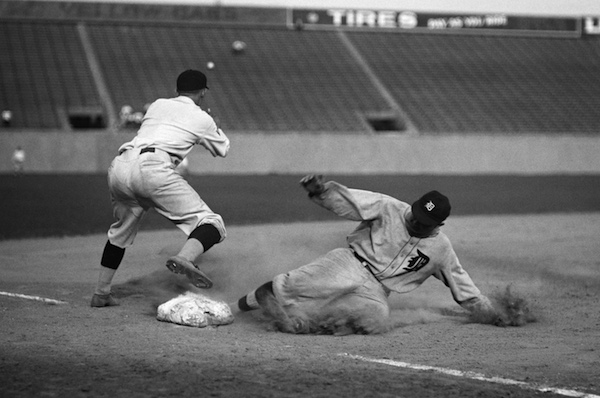Dear Sports Fan,
Here’s something I’ve been wondering – why aren’t there more triples in baseball? I see a lot of doubles and there are always a few home runs, but I don’t know if I’ve ever seen a triple! What’s up with that?
Thanks,
Mona
Dear Mona,
Triples are the rarest type of hit in Major League Baseball by a long shot. Over this season and last, only roughly 2% of all hits have been triples. This wasn’t always the case. Until 1930, there were more triples in baseball than home runs. There are two main reasons for the rarity of triples in today’s game: they are difficult to achieve and not worth that much. We’ll take a quick trip into history to see what changed to make triples so unusual and then fast forward 80 years into today’s baseball to describe why they continue to be infrequent.
When baseball was in its infancy, from the 1860s to the 1910s, most baseball fields had no walls. Baseball was played on a hypothetically infinite field. No matter how far a batter hit the ball, a fielder could theoretically run, pick it up, and throw the ball to a teammate in the infield. As you might imagine with this setup, the frequency of types of hit was in a natural kind of order. Singles were more common than doubles, which were more common than triples, which were more common than home runs. Every home run was what we now call an “in the park home run” because there were no walls beyond which, if a ball was hit, it would be an “out of the park home run.” Even after ballparks were built with walls, so that a ball hit beyond the wall was a home run, triples continued to be more common than home runs. The walls were set so far out (and the balls were so difficult to hit far) that they didn’t really effect how the game was played. According to the SABR Research Journal from 1901 to 1929 “the average distribution was: 76.9 percent for singles, 15.2 percent for doubles, 5.3 percent for triples, and 2.7 percent for homers.” During the 1920s, baseball team owners gradually moved the walls or fences in, to make outside the park home runs more common and also adjusted the way baseballs were produced to make them fly farther. As you can see in this line graph from High Heat Stakes, the frequency of home runs passed that of triples around 1930 and has never looked back.
In today’s game, triples are the rarest type of hit by a wide margin. In 2014, 68% of hits were singles, 20% were doubles, 2% of hits were triples, and 10% were home runs. The most obvious reason for the scarcity of triples is that they are hard to do! Baseball fields may look enormous, but the athletes on them are quite fast and they cover a lot of ground. Almost no matter where the ball is hit, one of the nine fielders should be able to reach it and throw the ball to the infield before the batter can run the 270 feet from home base to first base, around to second and then to third base. The only two plausible reasons for a triple today are some kind of mishap — a funny bounce, a tripping outfielder, an animal running onto the field — or the ball being hit to an area of the field that the defense purposefully left uncovered because they didn’t think the batter would hit the ball there.
Despite how difficult they are, teams could probably get a few more triples than they do if they were really trying for them. On any hit that’s not obviously going to lead the runner safely to third base, teams tend to be conservative and ask the runner to stop at second. It’s rare for someone to try to “stretch” a solid double into a risky triple. The reason for this is that having a runner on third base is not thought of as a big advantage over having a runner on second base. It’s commonly understood that a runner on second base will be able to run home and score on any hit that gets past the infielders. This is almost exactly the same for a runner on third base. Without any real incentive to get to third base, players would rather stop at second than run to third and risk getting thrown out.
How rare is a triple? Around 2% or one in fifty hits are triples. Teams average around eight and a half hits per game. Multiply that by two because there are two teams playing in each game and you get 17 hits per game. 17 times three is 51, which is close enough for me to 50. So, we’d expect to see a triple about once every three games or so. Rare, but not unheard of!
Thanks for reading,
Ezra Fischer

